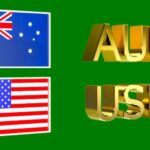EURUSD clings to modest gains against the US Dollar (USD) in early Thursday trading, as optimism surrounding ongoing US-European Union (EU) trade talks provides temporary relief to markets. Despite the upside attempt, the EURUSD pair remains capped below the 1.1750 resistance level, a critical trendline demarcating the upper boundary of a descending channel in place since July 1.
At the time of writing, EURUSD trades near 1.1740, having pulled back from intra-day highs. Investors are treading carefully amid a cloud of global trade uncertainties. However, recent positive sentiment from both US President Trump and EU Trade Chief Maros Sefcovic raised hopes that a damaging 10% tariff could be avoided, buoying the common currency in the near term.
Fed Minutes Tilt Dovish, Undermining USD Strength
Wednesday’s release of the Federal Open Market Committee (FOMC) minutes from the Fed’s June meeting revealed growing internal support for interest rate cuts. The majority of committee members expressed a view that current inflation softness and labor market cracks warrant additional accommodation, especially if global trade tensions persist.
This dovish shift weakened the US Dollar slightly, as traders recalibrated expectations for rate cuts, especially for the upcoming September meeting. According to the CME FedWatch Tool, markets are now pricing in a 72% probability of a 25 basis points (bps) rate cut in September, up from just under 65% before the minutes.
Treasury Yield Drop Reinforces Dollar Weakness
US Treasury markets responded swiftly to the dovish tone. The 10-year Treasury yield fell by nearly 10 basis points, a notable move that reinforced the Fed’s accommodative bias. Wednesday’s $39 billion bond auction also saw strong demand, a signal of investor preference for safety amid geopolitical and economic uncertainty.
Lower yields tend to weigh on the US Dollar as the interest rate differential between US and foreign bonds narrows, making the greenback less attractive to global investors.
German Inflation Data Confirms Disinflationary Pressure
Across the Atlantic, economic data released Thursday morning added more context to the Euro’s performance. The German Consumer Price Index (CPI) came in flat on a monthly basis in June, while year-over-year inflation eased to 2.0%, aligning exactly with the European Central Bank’s (ECB) target.
Though in line with expectations, the data confirmed that inflation in the Eurozone’s largest economy has stalled, potentially complicating the ECB’s future rate decisions. Still, the ECB is unlikely to react prematurely unless inflation drops below target for a sustained period.
Market Cautious Ahead of US Jobless Claims
Later on Thursday, all eyes turn to the US Weekly Jobless Claims, a key barometer for the health of the American labor market. Recent macro data has shown signs of slowing job growth, and any uptick in claims could increase pressure on the Fed to act swiftly.
Analysts expect claims to hover near previous levels of around 240,000, but any sharp deviation could shift market sentiment on Fed policy and thereby affect EURUSD dynamics.
Trade Talks Hold the Key to Sustained Euro Gains
The short-term outlook for the Euro hinges largely on the outcome of EU-US trade negotiations. So far, constructive rhetoric from both sides has kept markets hopeful. President Trump acknowledged the EU’s “cooperative posture,” and EU Trade Chief Maros Sefcovic suggested that a formal agreement may be reached before the August 1 deadline.
If a deal struck, it would remove a significant tail-risk for the Eurozone economy, currently grappling with subdued manufacturing activity and disinflation. In contrast, failure to reach a deal may trigger retaliatory tariffs, renew risk-off sentiment, and drag EURUSD sharply lower.
EURUSD Technical Outlook: Resistance Caps Recovery
Despite the recent rebound, EURUSD remains trapped in a bearish structure that began at the start of July. The 1.1750 level marks a key resistance, coinciding with the upper boundary of a descending channel. A break and close above this level would be require to confirm a bullish reversal.
Key technical levels:
Support: 1.1700 (psychological), 1.1655 (July low)
Resistance: 1.1750 (trendline), 1.1785 (June high)
Momentum indicators such as the Relative Strength Index (RSI) remain neutral near 50, suggesting no strong conviction in either direction yet. Price action will likely be dictated by upcoming macro data and clarity on trade developments.
Euro Performance Against Majors: Strongest vs. Swiss Franc
The Euro’s performance against major currencies on Thursday has been mixed, but it has shown notable strength against the Swiss Franc (CHF), traditionally seen as a safe-haven currency. The Euro gained 0.13% against CHF, while it rose 0.09% against the US Dollar.
Conversely, EUR fell slightly versus commodity currencies like the Australian Dollar (AUD) and New Zealand Dollar (NZD), which tend to benefit when global risk sentiment improves. This divergence reflects investors’ cautious optimism about trade, with some rotation into higher-yielding assets.
Conclusion: Tug of War Between Fed Dovishness and Trade Hopes
In summary, the EURUSD pair supported by a softer US Dollar and improved trade sentiment, but upside remains limited due to the prevailing bearish technical structure and uncertain macro landscape. Key events like the US Jobless Claims and further trade headlines will shape short-term direction.
If EU-US trade talks produce a deal and US job data disappoints, EURUSD could challenge 1.1750 and even target 1.1785. Conversely, if talks collapse or US labor data surprises to the upside, the pair may retest 1.1700 and drift lower toward 1.1650.
Disclaimer: This blog is for informational purposes only and does not constitute financial advice. Always conduct your own research and consult a professional advisor before making investment decisions.
[sc_fs_multi_faq headline-0=”h2″ question-0=”Why is the EUR/USD pair struggling to break above 1.1750?” answer-0=”The 1.1750 level represents a key technical resistance, aligning with the upper boundary of a descending channel. Until price breaks above this level on a daily closing basis, bullish momentum remains limited. ” image-0=”” headline-1=”h2″ question-1=”What impact did the Fed minutes have on the US Dollar?” answer-1=”The Fed minutes revealed that most members support a rate cut, likely in September. This dovish stance weakened the Dollar, especially as US Treasury yields dropped in response. ” image-1=”” headline-2=”h2″ question-2=”How is the Eurozone inflation outlook shaping up?” answer-2=”German CPI data confirmed flat inflation in June, with annual inflation at 2.0%. This matches the ECB target but highlights that price pressures are weak, reducing the urgency for further ECB hikes.” image-2=”” count=”3″ html=”true” css_class=””]









